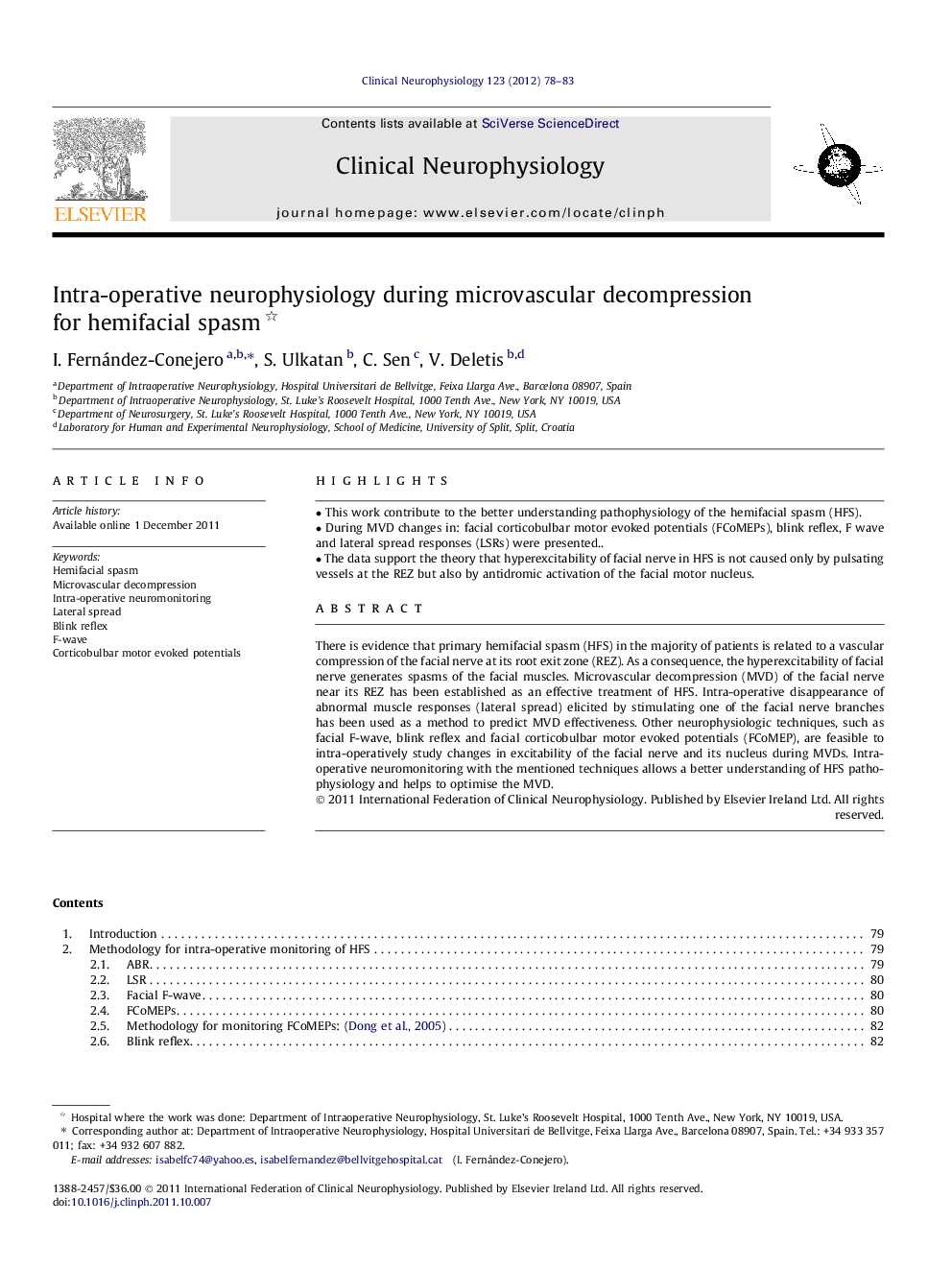| Article ID | Journal | Published Year | Pages | File Type |
|---|---|---|---|---|
| 3043833 | Clinical Neurophysiology | 2012 | 6 Pages |
There is evidence that primary hemifacial spasm (HFS) in the majority of patients is related to a vascular compression of the facial nerve at its root exit zone (REZ). As a consequence, the hyperexcitability of facial nerve generates spasms of the facial muscles. Microvascular decompression (MVD) of the facial nerve near its REZ has been established as an effective treatment of HFS. Intra-operative disappearance of abnormal muscle responses (lateral spread) elicited by stimulating one of the facial nerve branches has been used as a method to predict MVD effectiveness. Other neurophysiologic techniques, such as facial F-wave, blink reflex and facial corticobulbar motor evoked potentials (FCoMEP), are feasible to intra-operatively study changes in excitability of the facial nerve and its nucleus during MVDs. Intra-operative neuromonitoring with the mentioned techniques allows a better understanding of HFS pathophysiology and helps to optimise the MVD.
► This work contribute to the better understanding pathophysiology of the hemifacial spasm (HFS). ► During MVD changes in: facial corticobulbar motor evoked potentials (FCoMEPs), blink reflex, F wave and lateral spread responses (LSRs) were presented.. ► The data support the theory that hyperexcitability of facial nerve in HFS is not caused only by pulsating vessels at the REZ but also by antidromic activation of the facial motor nucleus.
